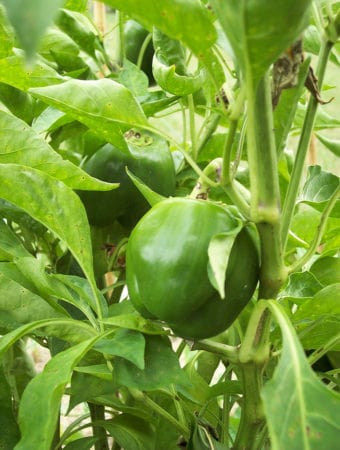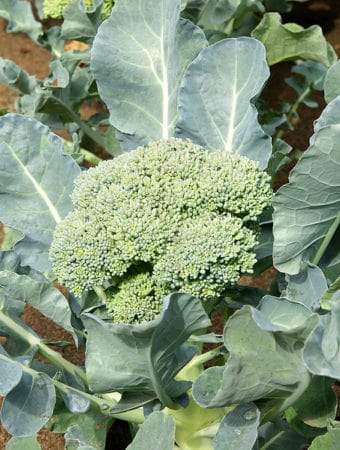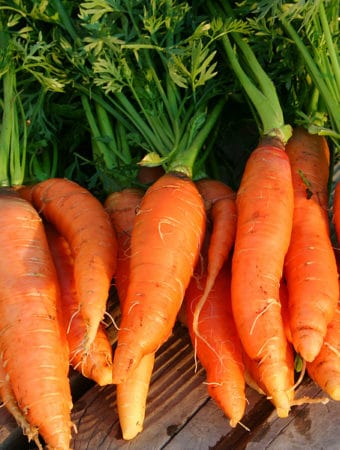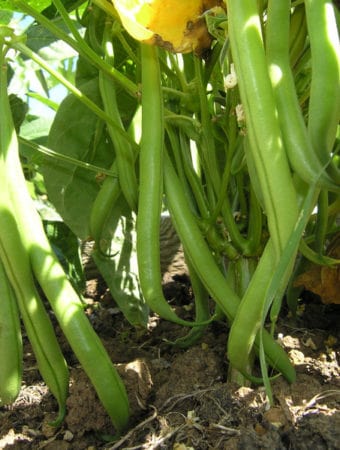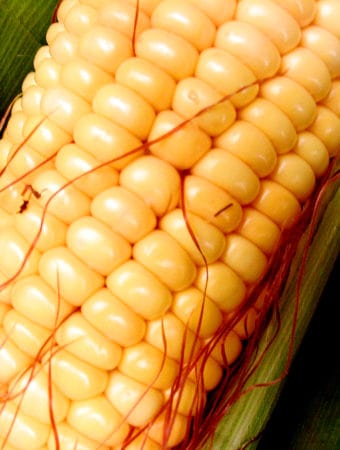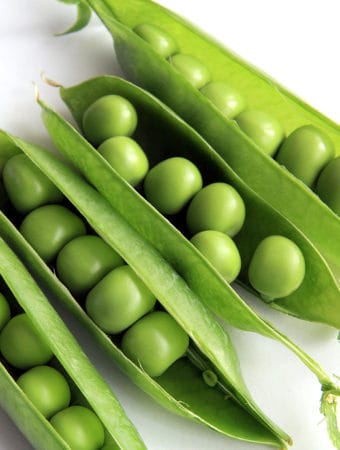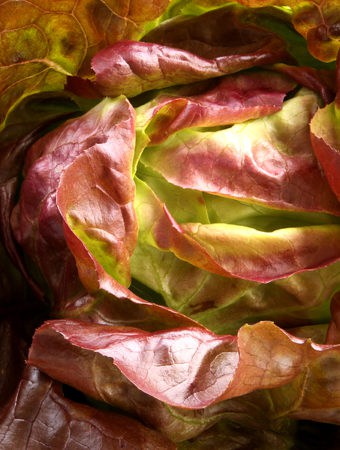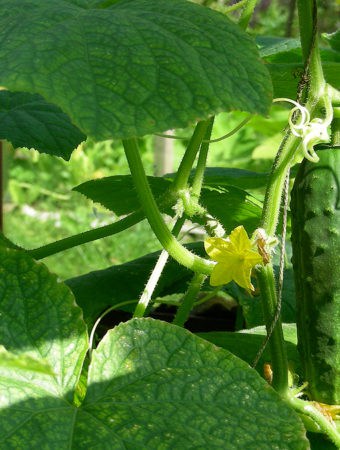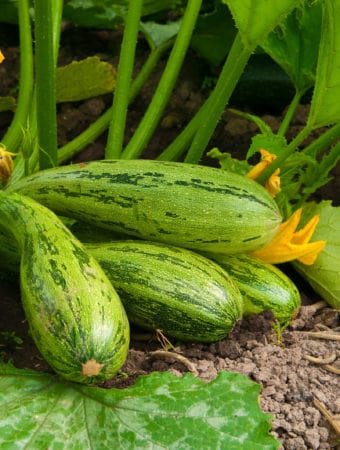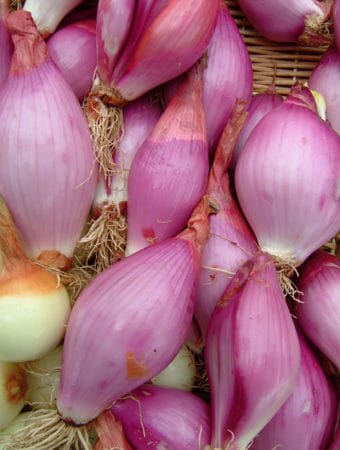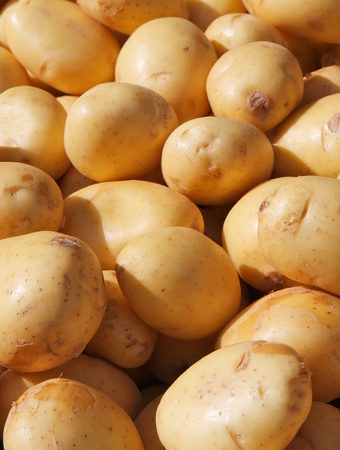Snow. Blustery and windy. Mild and sunny.
March brings the end of winter and the beginning of spring. Spring for the northern hemisphere will arrive on March 20, the vernal equinox. On this day, the sun rises directly in the east and sets directly in the west. There will be exactly 12 hours from sunrise to sunset. And in the northern hemisphere, every day will grow just a little bit longer until summer.
March, called Martius, by the Romans, was named for Mars, the Roman god of war. March was the first month on the ancient Roman calendar until Julius Caesar revised the calendar to make March the third month.
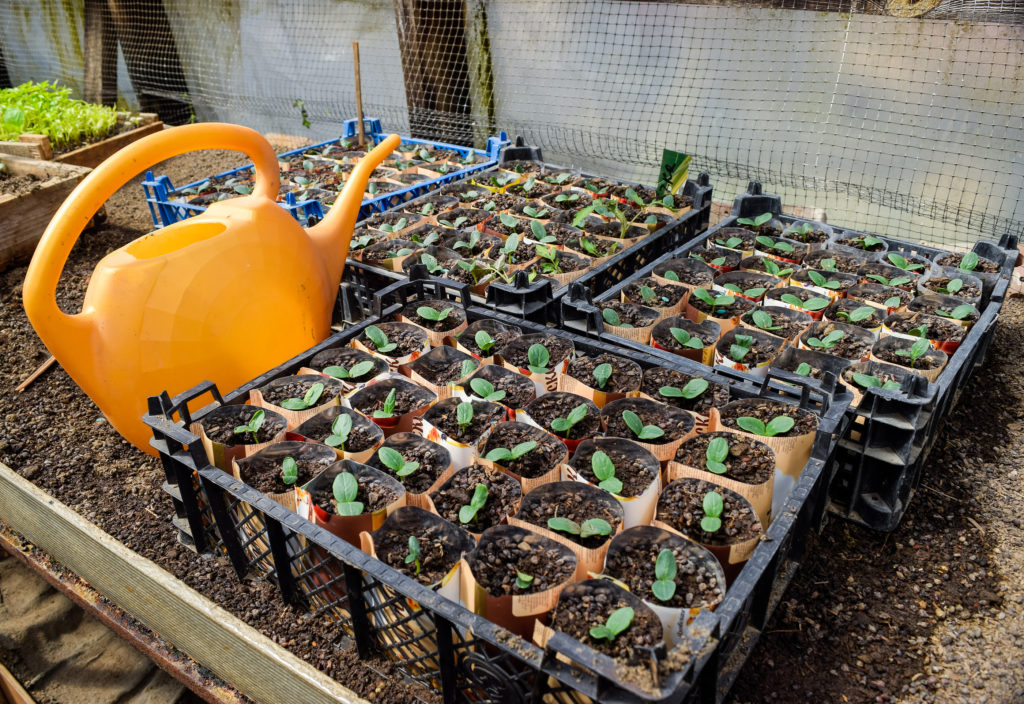
March is the month to start growing vegetables in earnest. Seed starting can begin outdoors in mild regions and indoors in cold regions. There are still six to eight weeks, maybe even ten weeks before warm-season plants can go into the garden in most cool- and cold-winter regions, but now, or soon, is the time to start seed-sowing indoors.
March planting
March is the month to get busy in the northern garden. artichokes suckers, garlic cloves, and potatoes should be planted now for harvest in 6 months. In the greenhouse or glasshouse, tomato, eggplant, and peppers seeds should be sown this month for planting out in 6 to 8 weeks when the weather has turned warm. Cucumbers, leek, melons, squash, and zucchini should also be sown indoors this month. If you are in a short-summer region, wait until the start of next month to start these seeds.
Here is a planting list for March in the northern hemisphere:
Cold northern regions—Zones 3-6. Vegetables: artichoke suckers, beets, cabbage, cape gooseberry, capsicum, carrots, chard (silverbeet), cress, endive, kohlrabi, lettuce, spring onion, parsnip, peas, potato tubers, radish, rhubarb crowns, rutabaga (Swedes), salsify, Swiss chard (silverbeet), tomato, turnips. Herbs: basil, borage, caraway, celeriac, chamomile, chervil, chives, coriander, garlic, hyssop, lemon balm, oregano, parsley, salad burnet, thyme.
Temperate Regions—Zones 7-9. Vegetables: artichoke suckers, beans, beets (beetroot), cabbage, cape gooseberry, capsicum, carrots, celery, chard (silverbeet), chayote (choko), chicory, cress, cucumber, eggplant, endive, kohlrabi, leeks, lettuce, melons, mustard, spring onions, parsnip, peas, potato tubers, radish, rhubarb crowns, salsify, squash, sweet corn, sweet potato, tomato, zucchini. Herbs: basil, borage, caraway, chamomile, chervil, chicory, chili, coriander, dill, fennel, garlic, hyssop, lemon balm, oregano, parsley, thyme.
Subtropical and Tropical Regions—Zones 10-12. Vegetables: beans, beet (beetroot), cabbage, cape gooseberry, capsicum, carrots, celery, chayote (choko), Chinese cabbage, cress, cucumber, eggplant, fennel, lettuce, marrow, melons, mustard, okra, parsnip, peas, potatoes, pumpkin, radish, rhubarb crowns, salsify, Swiss chard (silverbeet), spring onion, squash, strawberry runners, sweet corn, sweet potato, tomato, zucchini. Herbs: basil, borage, caraway, chamomile, celeriac, chervil, coriander, dill, garlic, hyssop, lemon balm, marjoram, oregano, parsley, salad burnet, thyme.
Seed Start Warm-Season Crops Indoors
By the middle of the month, tomatoes, peppers, cucumbers, eggplants, squashes, cantaloupes, and watermelons can be started in flats indoors. These warm-season crops can be sown in flats nearly filled with pre-moistened seed-starting mix. Level the mix then gently sprinkle seed on top. Press the seed into the soil surface with a piece of flat wood to make good contact then add a layer of the mix on top–three times the diameter of the seed. Next, slip the flat into a plastic bag and tie it off. Set the flats in a warm spot out of direct sunlight until the seeds sprout. Be sure to label each flat. Sow one flat for each vegetable.
When seeds sprout, remove the plastic “greenhouses” and place the flats where they will stay warm, but not hot, and where they will get full sun during the day, a greenhouse, hothouse, or south-facing window is best. Use fluorescent lights where the sun is not available. Use room temperature water to keep the soil moist, but not wet. Once seedlings are three weeks old, water seedlings with a diluted mix of fish emulsion or compost tea once a week.
Seedlings will likely need potting up once or twice before they go into the garden. Don’t allow seedlings to get leggy or spindly before potting them up. (Potting up means moving seedlings into the next largest pot.)
Outdoor seed sowing
Cool-weather crops can be sown or set in the garden as soon as the soil is workable in early spring. If you pick up a ball of soil in your hand and the lump crumbles apart when you open your fist, the soil is workable–not too wet or too cold. If the lump is shiny or sticky, wait for the garden to dry out.
Crops for sowing or setting out in the garden in March
Brussels sprouts. Sow seeds for main crop Brussels sprouts and set out hardened-off plants. Sow seed ½ inch deep and 6 inches apart. Hardened-off Brussels sprouts seedlings will be in garden centers this month. Set starts with planting beds turned and amended with aged compost. Brussels sprouts that have been over-wintered in cold frames can be set in the garden now.
Parsnips. Sow parsnips this month, early in warmer regions, and later in cold regions. Add aged manure or compost to the planting bed in advance of sowing and turn the bed. Broadcast a blend of 2 parts bone meal and 1 part sulfate of potash at 3 ounces per square yard. Sow seed ½ inch deep and 15 inches apart, later thin seedling to 6 inches apart. Harvest will come next winter.
Kohlrabi. Sow kohlrabi in warm regions. Sow seed ½ inch deep in rows 12 to 15 inches apart. Do not plant kohlrabi where clubroot disease has been a problem in the past.
Potatoes. Plant early potatoes in mild regions starting in the middle of the month. Hold off planting if the soil is very wet. Set seed potatoes in trenches 12 inches wide and 9 inches deep. Place 2 to 3 inches of aged compost or aged steer manure at the bottom of the trench. Set tubers 12 to 14 inches apart then draw up and cover them with a ridge of soil
Onions. Set onion bulbs this month in well-drained soil. Set bulbs 9 inches apart in rows 12 inches apart. Set bulb tips just above the soil level. Onions grow best in beds that were amended with aged manure in the fall.
Salad onions, radishes, and lettuce. Salad crops can go into sheltered beds in warm regions. Sow these seeds ½ inch deep in drills 12 inches apart. Take time sowing evenly so that you don’t have to spend a lot of time thinning seedlings later.
Cabbages. Sow seed of late summer cabbages in a sheltered bed. Sow cabbage seeds 6 inches apart and ½ inch deep.
Peas. Continue sowing early, round-seeded peas this month. Sow seed 2 inches deep and 2 inches apart in rows set 9 inches apart. If you plant in drills, sprinkle bone meal at the bottom of each drill.
Leeks. Sow seed of leeks in rich soil this month. Sow seed ½ inch deep. Leeks grow best in well-worked soil amended with aged compost.
Spinach. Sow summer spinach for harvest in May and June. Sow seed 1 inch deep in rows 9 inches apart. Sow seed 1½ inches apart and later thin seedlings to 6 inches apart.
Carrots. Sow carrots under cloches or plastic tunnels. Sow seed ½ inch deep in rows 9 inches apart.
Shallots. Complete shallot planting this month. Set shallot bulbs in well-drained soil. Set bulbs 6 inches apart in rows 10 inches apart. Set the bulb tips just above the soil level.
Asparagus. Set asparagus roots 15 inches apart. Spread the roots out fanlike and place the crowns 3 inches below soil level. Do not harvest asparagus the first year and only sparingly the second year. Dress asparagus beds in advance of planting with aged manure and a 3-inch topping of planting mix or topsoil.
Jerusalem artichokes. Set sunchoke tubers in holes 12 inches square and 12 inches deep. Add aged compost or manure to the hole before planting tubers. Space plants 18 inches apart.
Tomatoes. Tomatoes for transplanting in the garden in May can be started from seed this month in a cold frame or greenhouse that does not drop below 65°F day or night. Tomato seed germinates best at 75°F to 85°F. When seedlings get their first set of true leaves they should be potted up to 4-inch containers.
Herbs. Prepare herb beds as soon as the soil can be worked. Herb beds should be finely rolled and raked; even small clods should be broken up. Sowing can start when the soil has warmed. Sow chervil, chives, dill, marjoram, parsley, and sorrel this month. Sow seed in drills 1 inch deep and rows 8 inches apart. Sow just enough for cookery seasoning, a pinch or two. For drying and storing herbs, sow more.
Old clumps of bergamot, sorrel, and chives can be separated, and new plants taken from the parent plants and re-planted.
Basil can be sown in a greenhouse or cold frame that does not dip below 55°F.
March harvest
If you live in the moderate temperate regions of the northern hemisphere, you are still enjoying the cool weather harvest: the vegetables you planted last fall that are still producing: broccoli, cauliflower, chard, lettuce, mustard, snow peas, and spinach.
Here is a list of other vegetables and fruits coming to harvest in March: Vegetables: artichoke, asparagus, beets, broccoli, Brussels sprouts, cabbage, carrot, celeriac, celery, chard (silverbeet), Chinese cabbage, kale, lettuce, parsnip, peas, purslane, radish, rhubarb, spinach. Fruit: avocadoes, cape gooseberries, grapefruit, lemons, limes, mandarins, Navel oranges, passion fruit, tamarillos, and tangelos.
March garden in the Southern Hemisphere
Autumn will arrive in the Southern Hemisphere–Australia, New Zealand, South Africa, Argentina, Uruguay, and Chile–on March 20. Here’s a roundup of planting, harvesting, and things to do during March in the Southern Hemisphere.
Plant autumn crops
Cool-season crops should be planted as soon as possible: beetroot Brussels sprouts, carrots, cauliflower, endive, leek, parsley, parsnip, potatoes, silverbeet (chard), and Swede (rutabaga). Cool-weather crops require warm weather to germinate and begin growth. They will mature in the cool weather of autumn and be ready for harvest in autumn, winter, and early spring.
Here is a list of the vegetable crops that you can sow this month in the temperate, cold, tropical, and sub-tropical regions of the Southern Hemisphere:
Temperate regions: artichoke suckers, broad beans, beetroot, Brussels sprouts, buckwheat, cabbage, carrot, cauliflower, Chinese cabbage, cress, eggplant, endive, kohlrabi, leeks, lettuce, mustard, onions, spring onions, peas, radish, rhubarb crowns, silverbeet (Swiss chard), strawberry runners, Swede (rutabaga), and turnip.
Cold regions: broad beans, buckwheat, cabbage, Chinese cabbage, cress, leek, lettuce, onion, radish, spinach, spring onion, strawberry runners, and turnip.
Tropical and sub-tropical regions: artichoke suckers, beans, beetroot, broccoli, cabbage, cape gooseberry, capsicum, carrot, celery, Chinese cabbage, cress, cucumber, eggplant, endive, kohlrabi, leeks, lettuce, mustard, onions, spring onions, parsnip, peas, potato tubers, radish, rhubarb crowns, silverbeet (Swiss chard), Swede (rutabaga), tomato, and turnip.
Plant onions. Onions should go into the garden now. Onions are day-sensitive plants. They will begin their green growth in early autumn and as the days shorten into winter their shoot growth will slow and the plant will redirect its efforts to bulb formation. If you wait too long to plant onions, they will not be far enough along to establish bulb set when the shortest days of the year come.
Plant peas, lettuce, and spinach. Sugar snap and snow peas can be planted now as well as lettuce and spinach. Get these crops in the ground early this month and you will be able to enjoy tasty green salads before winter.
What to plant in cooler southern regions. Vegetables: broad beans, cabbage, Chinese cabbage, cress, leeks, lettuce, onions, spring onions, radish, spinach, strawberry runners, and turnips. Herbs: caraway, chervil, chicory, parsley, salad burnet.
What to plant in mid-temperate regions: Vegetables: artichoke suckers, broad beans, beetroot, cabbage, carrots, cauliflower, Chinese cabbage, cress, eggplant, endive, kohlrabi, leeks, lettuce, mustard, onions, spring onions, peas, radish, rhubarb crowns, rutabaga (Swede), silverbeet (Swiss chard), turnips. Herbs: angelica, caraway, chervil, chicory, coriander, dill, hyssop, lemon balm, marjoram, oregano, parsley, salad burnet thyme.
What to plant in tropical and subtropical northern regions: Vegetables: artichoke suckers, beans, beetroot, broccoli, cabbage, cape gooseberry, capsicum, carrots, celery, Chinese cabbage, cress, cucumber, eggplant, endive, kohlrabi, leek, lettuce, marrow, mustard, onions, spring onions, parsnip, peas, potato tubers, radish, rhubarb crown, silverbeet (Swiss chard), tomato, turnip. Herbs: angelica, basil, borage, caraway, celeriac, chicory, chives, coriander, fennel, hyssop, marjoram, salad burnet.
Harvest time in Southern Hemisphere
The tomato and corn harvest should reach its peak this month.
Pumpkins harvested now should be allowed to “cure” in the sun–allowing their skins to harden. Be sure to harvest pumpkins with some of the stalks still attached so that they do not rot.
Apples and pears are ready for harvest. Harvest these fruits with a bit of leaf and stem still attached. Remember pears do not ripen on the tree. You need to pick them still firm and allow them to ripen on the kitchen counter. Pears that stay on the tree until they are soft will be mealy or woody inside.
Vegetables coming to harvest this month: beans, capsicum, carrots, chilies, Chinese cabbage, corn, cucumber, eggplant, kale, lettuce, melons, okra, peas, pumpkins, purslane, turnips, rutabaga (Swede), summer squash, tomatoes, turnips, zucchini.
Fruits and nuts coming to harvest this month: almonds, apples, avocadoes, brambleberries, grapes, figs, hazelnuts/filberts, kumquat, lemons, melons, mulberries, nectarines, oranges, passionfruit, banana passionfruit, peaches, pears, pecans, plums, raspberries, strawberries, tamarillos.
Things to do now in the Southern Hemisphere
Raspberry canes can be cut back to the ground once the harvest is complete. The old woody canes should be cut back; the recent season green canes can be left. If your raspberries were out of control this year, now is the time to tie the new green canes to a trellis for easier harvesting next year.
When strawberries are harvested you can peg down new runners and they will set roots at the leaf nodes. Your strawberry patch should be refurbished with new plants every three years.
If you plan to leave your garden fallow over the winter, consider revitalizing your soil with a “green manure” or cool-weather cover crop. Green manure crops include oats, pod vetch, lupins, and broad beans. The roots of these plants add nitrogen to the soil. These plants grow quickly and can be cut back and spaded under to add organic compost to your garden before winter or in spring.



